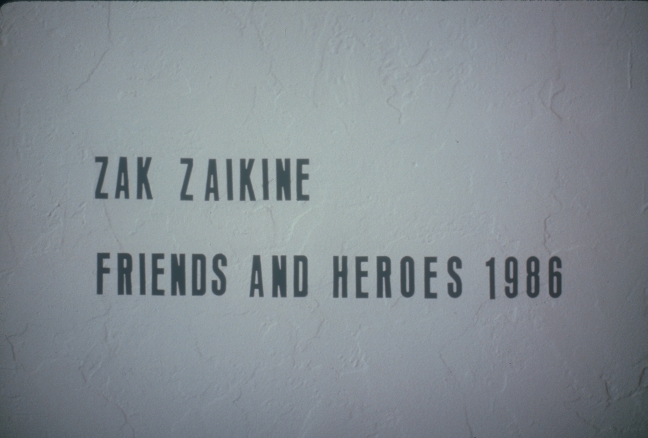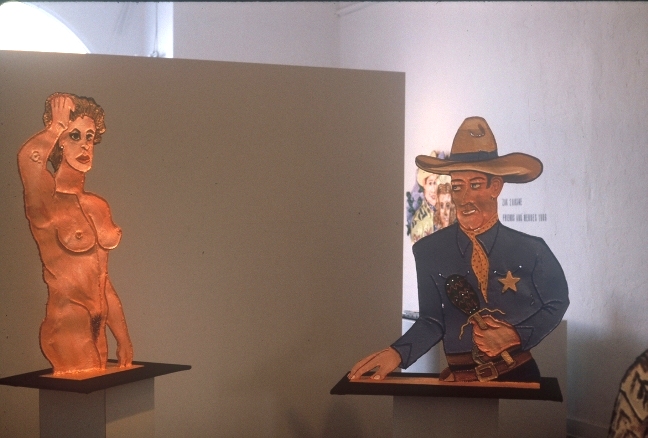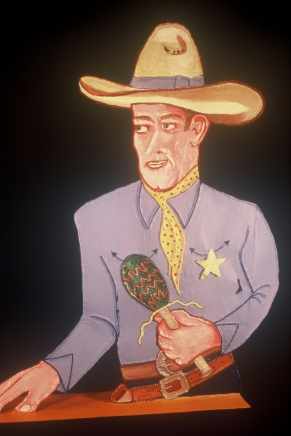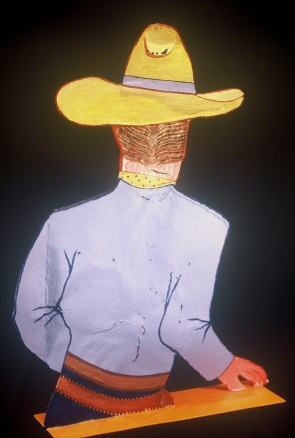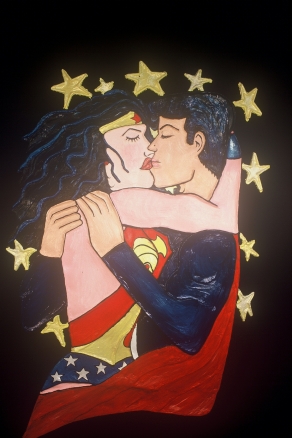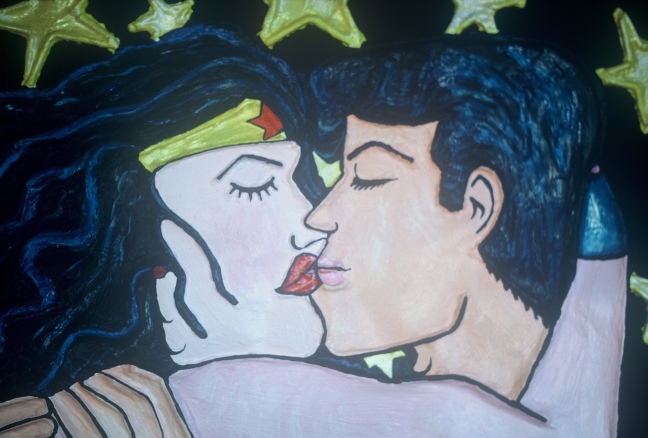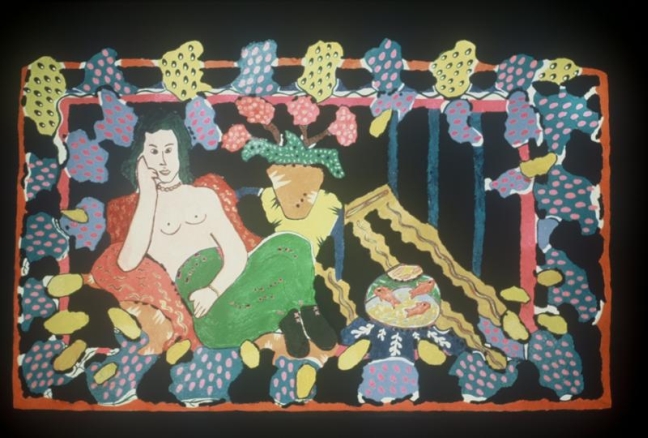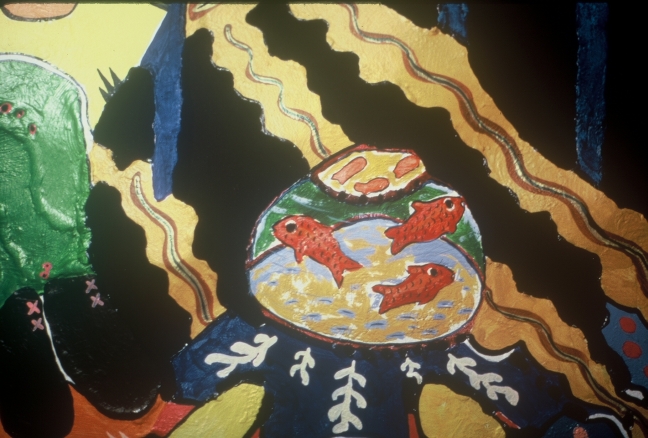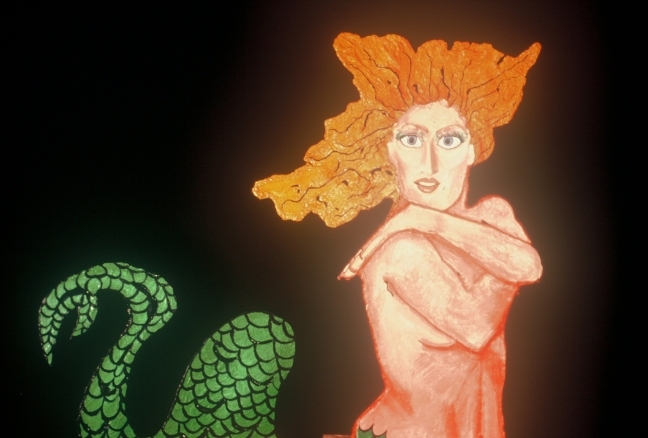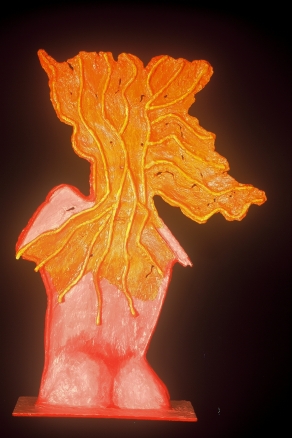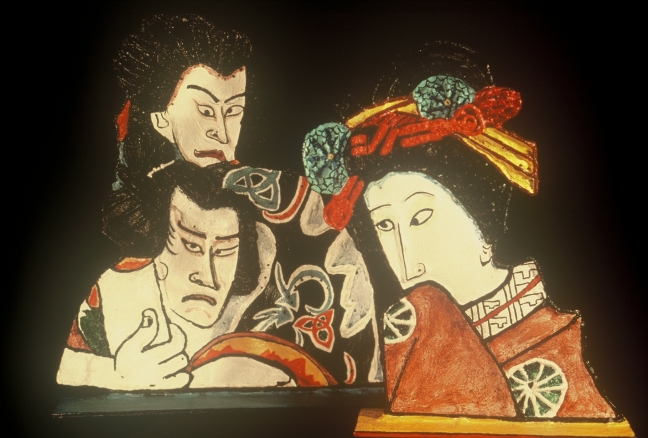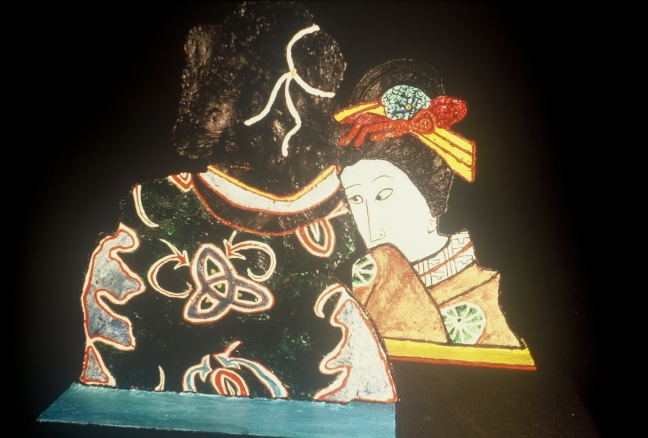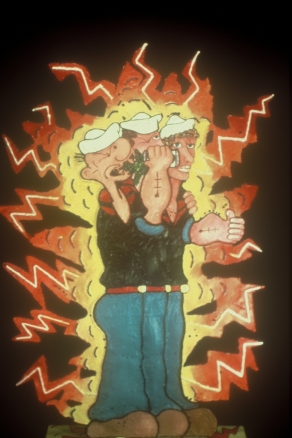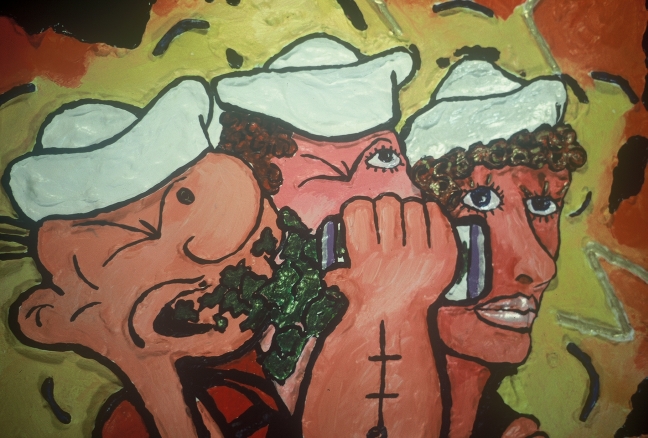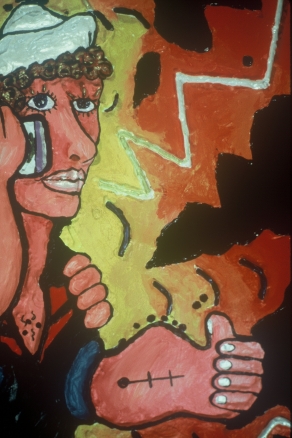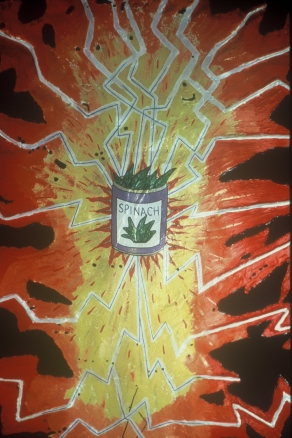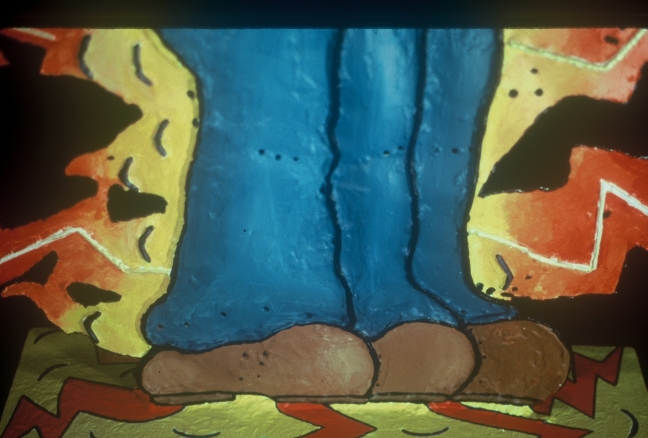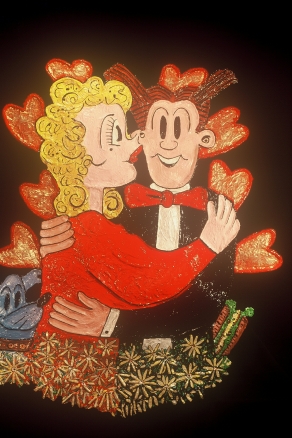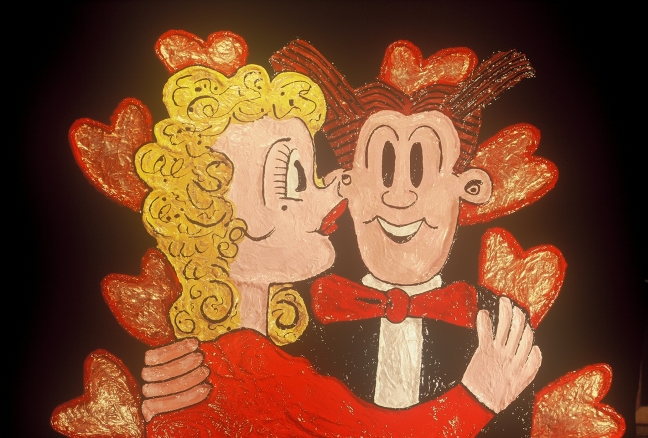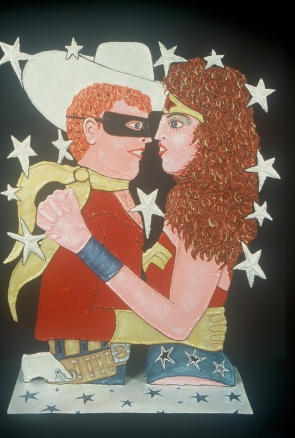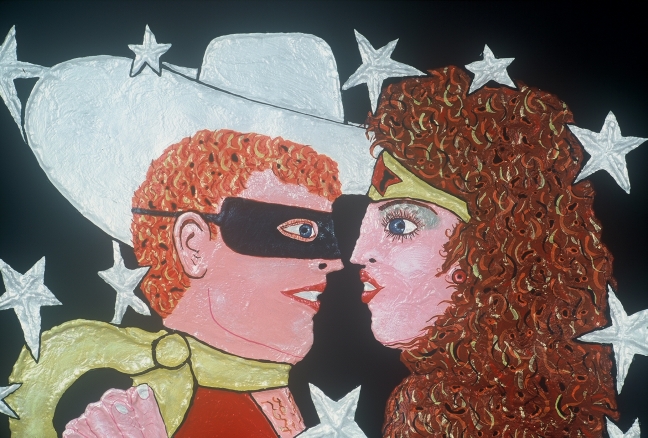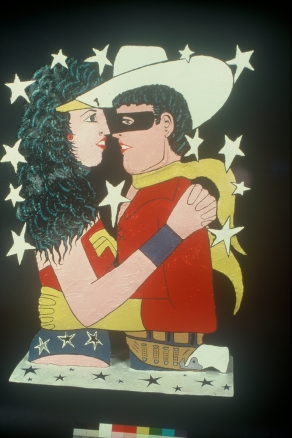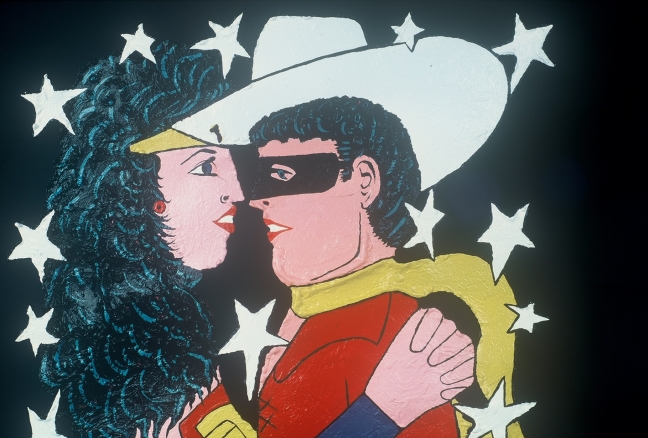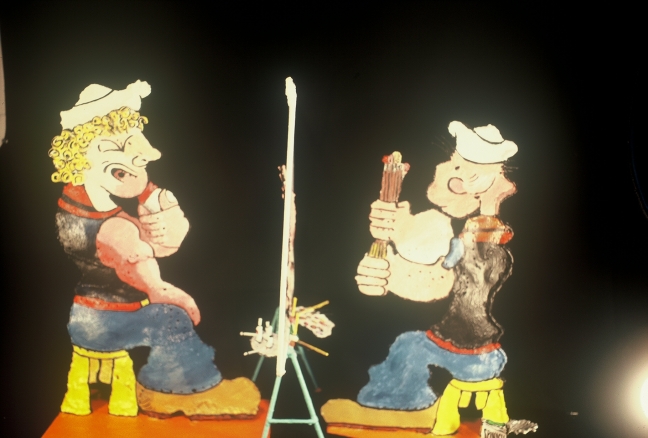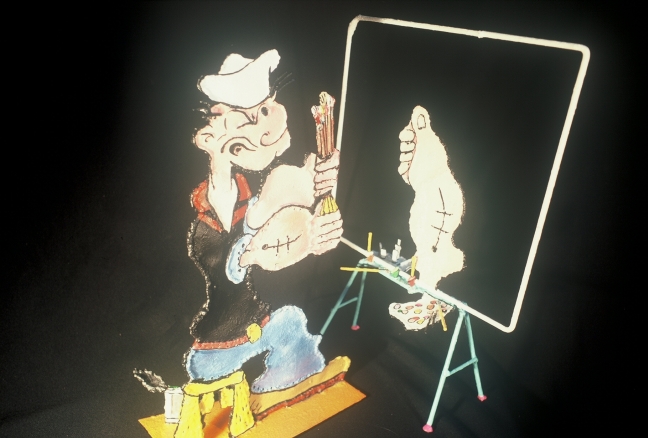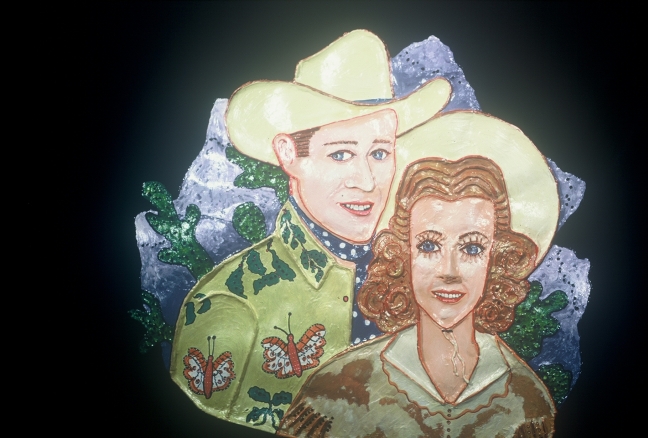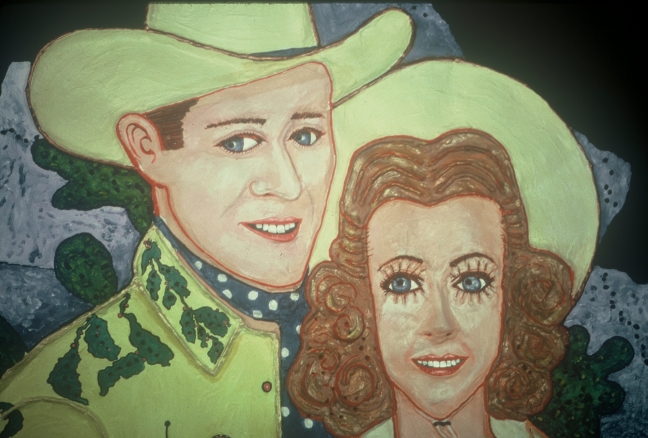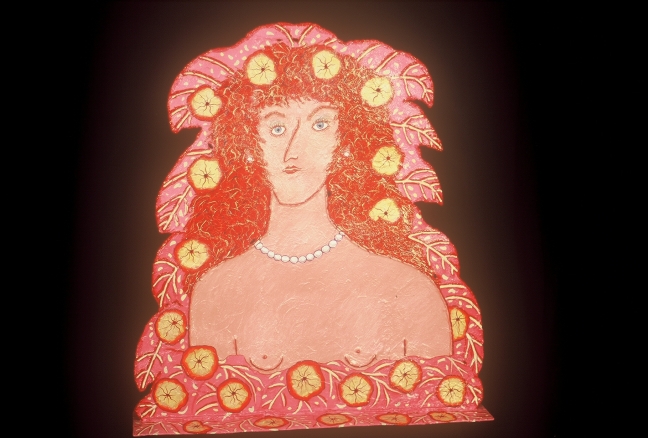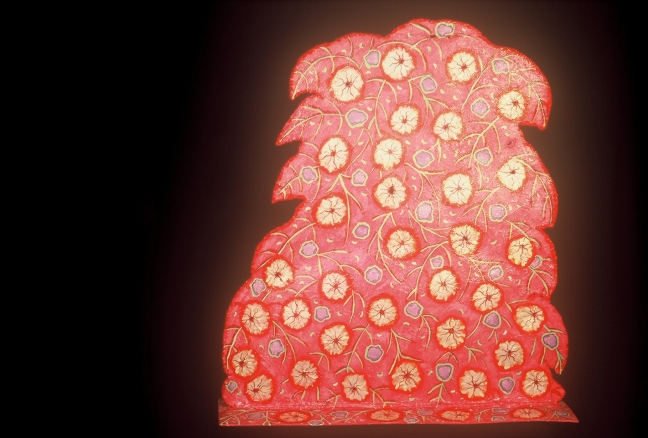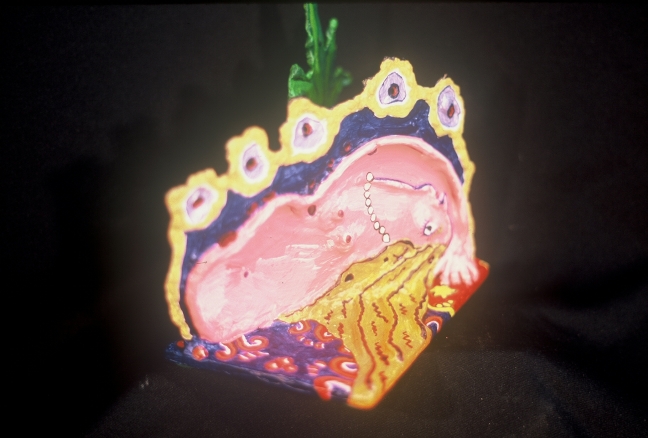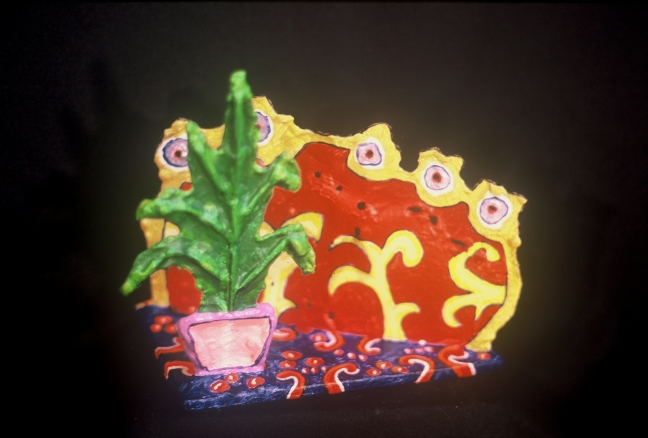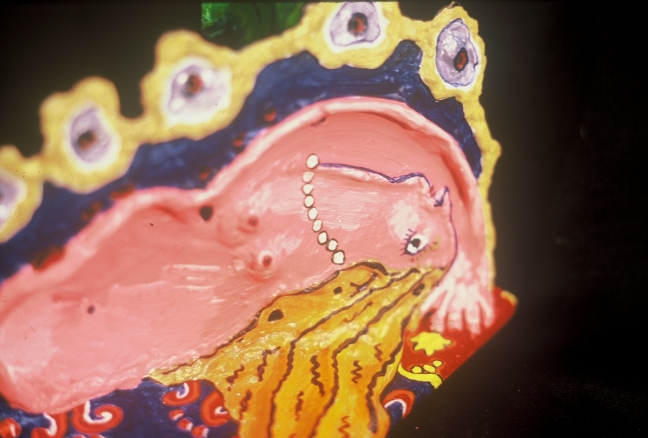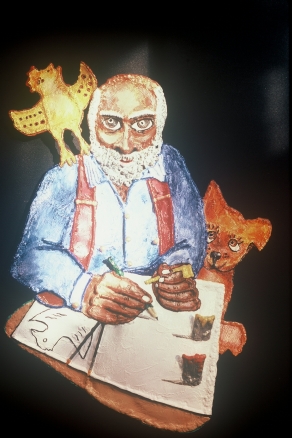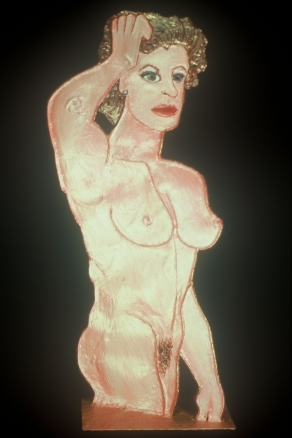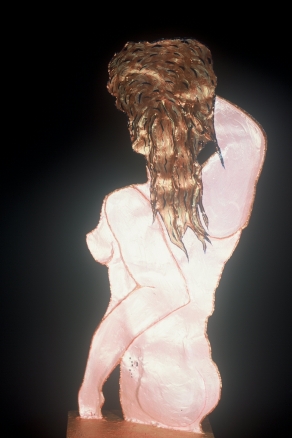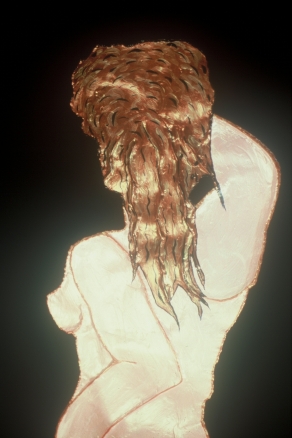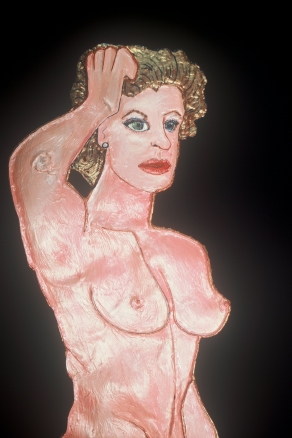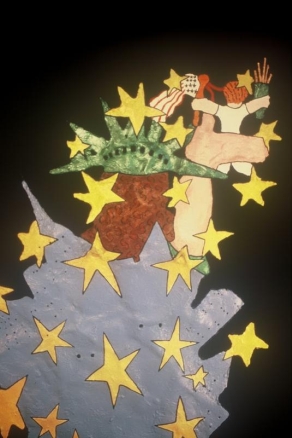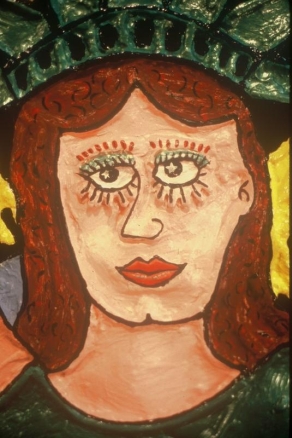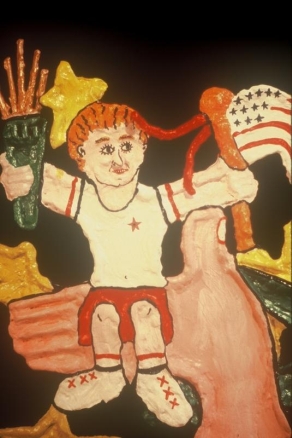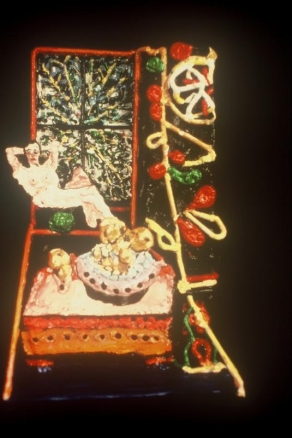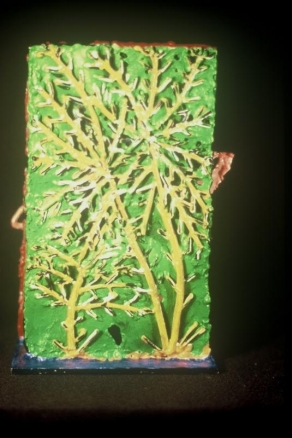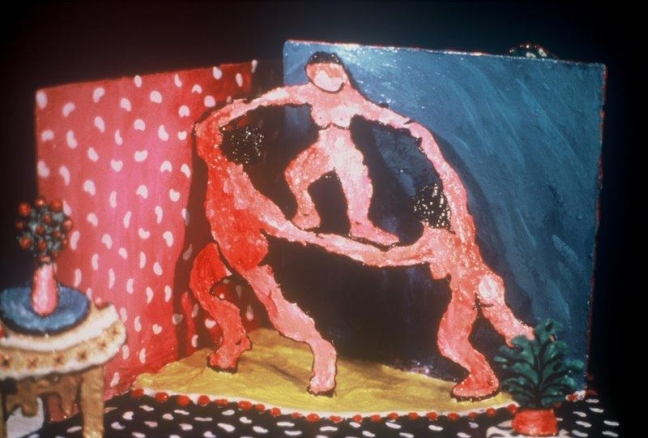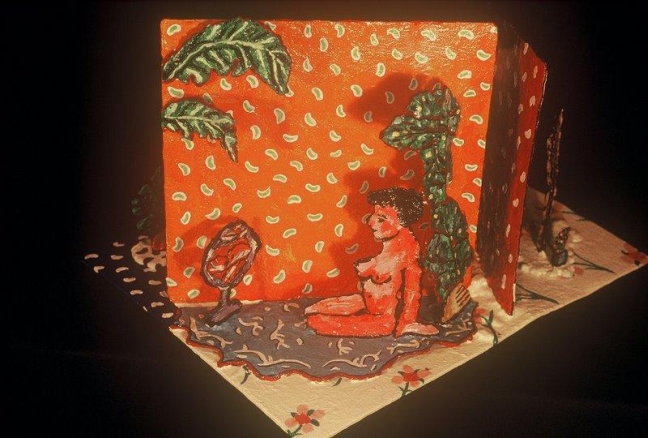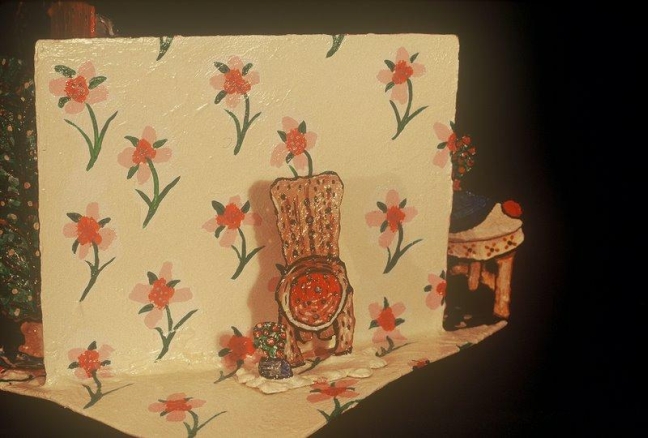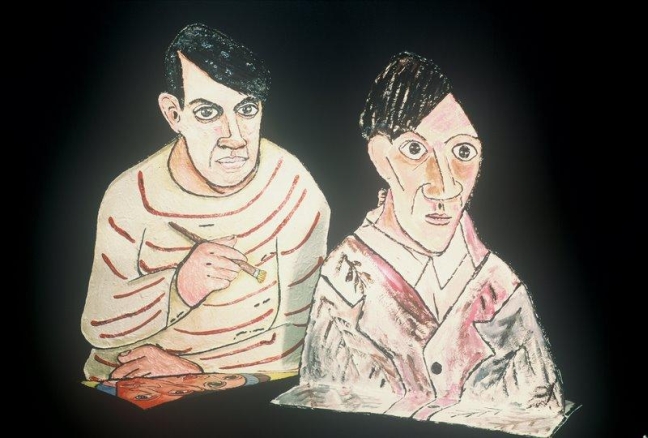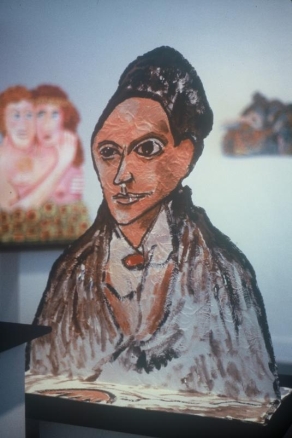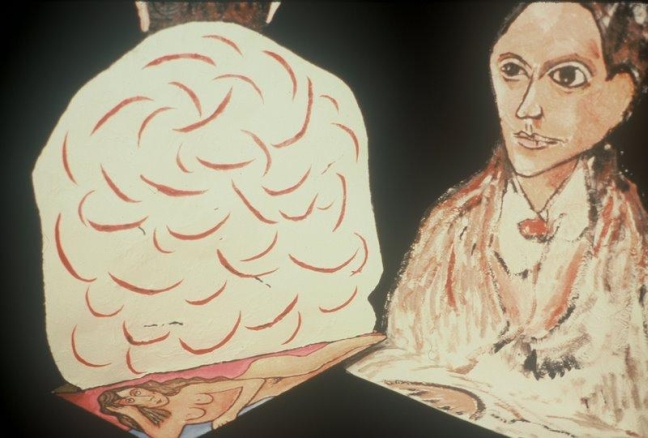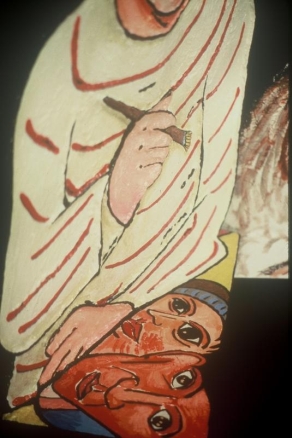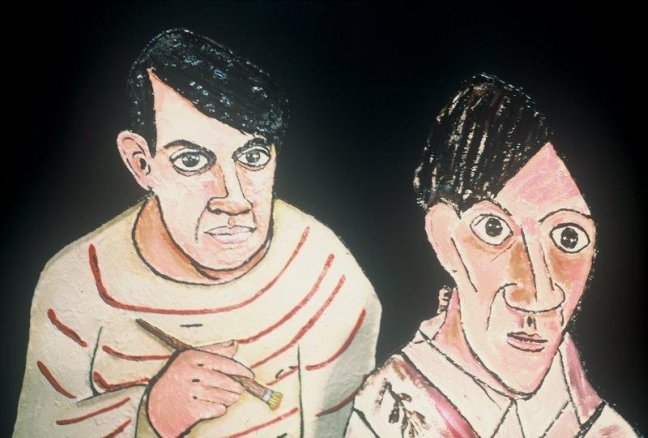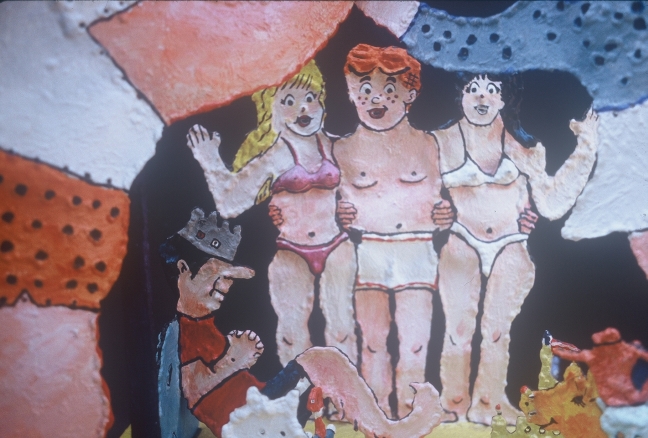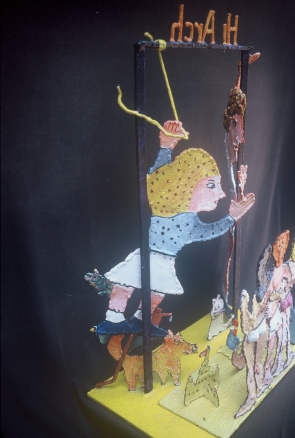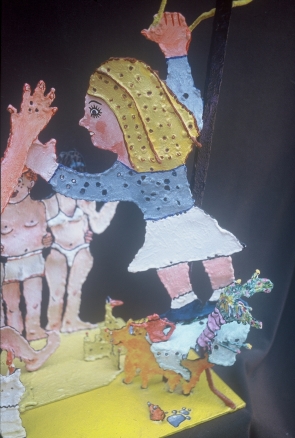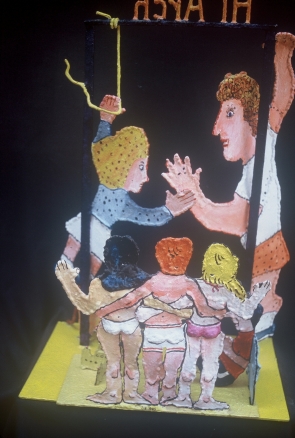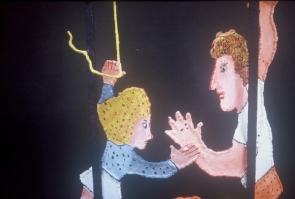Polychrome Welded Steel Sculpture |
|
|
|
Zak Zaikine: Man of Steel There are some things that are apparent and that can be ascertained about the artist, Zak Zaikine, simply by looking at a single piece of work: a sensibility that is at once tenacious and sly, an artistic persona as idiosyncratic and indelible with a wit that cuts like a diamond. But to go beyond a single work and gaze upon the varied oeuvre that is the result of Zaikine's half-century career, one discovers much more about the artist: his genuine respect for tradition, and his commitment to the true conjuring of a very personal, soulful alchemy. Steel sculptors-perhaps more than other artists-might be viewed as repositories of raw Promethean energy; as having an especially privileged connection to the valences and elemental properties of the material world. There is a mythic dimension to working with metal: the process can appear to be an allegory for the artist's level of determination and stamina, and for their moral compulsion or faith. The extreme durability of steel, one might suggest, in itself presents an expectation and opportunity for an imposing statement. Permanence is a precondition of the artwork-a fact of which the artist is always extremely aware. Of his works, Zaikine claims, "They will last for years out in the elements." In the early 1960's, when Zaikine's "epiphanies" were first finding expression, the U.S. economy was at the summit of its manufacturing might. The progress of Zaikine's arc-welding journey brought him to experiment with materials harvested from the industrial landscape. For a time he worked with car parts: "Metal and fire and candy-apple paint-those were my first loves! Later, I opened my own body shop and lived in glory-in between serving customers I enjoyed using crushed up fenders and other discards to set up a sculpture on a corner pedestal ... I welded together all kinds of material." At a time when smokestacks, assembly lines, and massive construction projects symbolized our society's muscle, Metal artwork existed in counterpoise to the steel and concrete encrustation of our urban habitat. The evolution of such art was a precipitation of the environment, as it were; an accident of individual consciousness in response to the public imagination-countercultural adornments an emanations made via the very same: junk" that had transformed the planet. For Zaikine, the subversive side of his own work lies partly in his ability to express actual textural qualities of the human body: "Most people do not realize that my works are steel, because I've eliminated the industrial, cold quality of steel through layers of pigment. This is important because I feel I treat each sculpture as a human body. We are fragile on the surface, but internally we are very strong because of our bones." Zaikine's figures often derive from pop-culture sources-mid-century kitsch and cartoon characters such as Blondie, Archie, and Popeye prevail. He has said, however, "It is not my intention to make Pop Art ... My work is not about our culture, but it is a creative expression of self, of what matters to me." He has cited classic abstract modernists such as David Smith and Henry Moore as major influences-in conjunction with the painting and color theories of Picasso and Matisse. Fully dissociating from their iconographic significance, the artist says that his images, "come from a deeply interior place." He adds, "I don't really know what most of what I do means." Zaikine does acknowledge losing his father; Russian muralist Eugene A. Zaikine, at an early age has profoundly informed his choice of subjects. In order to "contain my need for masculine energy," he says, "I projected tremendous power on to the only available and adequate images I could find"; hence, cowboy heroes, or his metamorphosing Popeye become totemic monographs of his own individuation. Nonetheless, in view of the culture at large, Zaikine's pop subjects-the nostalgic and bygone face of Lady Liberty, the Dagwood Bumsteads in a swirl of hearts and daisies-function as Engrams; the biochemical stimuli of memory, and they trigger associations that lead us to social readings of Zaikine's work which should not be discounted. Popeye the Sailor is a true working class hero and a figure of persistent relevance in the American unconscious. That said, the working class has receded from popular awareness in this country; this is no surprise as the factories and laborers that supply our products are mostly located elsewhere, i.e. China, Mexico. Accordingly, the politics of labor, which once dominated the national dialogue, has been eclipsed by other concerns such as the politics of ecology. The conception of the artist as a worker still has archetypal status, but the artist-worker ideal lost supremacy with the advent of conceptual art-where, in the words of conceptualist Lawrence Weiner, "The work need not be built." Zaikine stands firmly in the camp of artist-workers, and his work needed to be built. He epitomizes a certain kind of artist-the kind whose relentless interior quest and a mysterious inner fire yield a staggering output. He came of age at a time when artists imagined industrial production as an analogy for creative work. And like Picasso, who Zaikine commemorates wearing his famous mariner's striped shirt, he is a dynamo. -Mark Dorrity
Woodstock, New York |
|
"FINDING THE CHILD (WITHIN) AND BRINGING HIM BACK HOME" 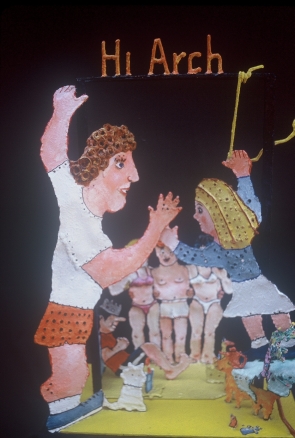
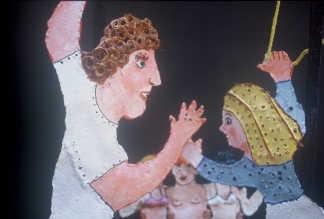
An essay by Victor Eugene "Zak" Zaikine a reflection of and on sculptural works begun in January 1983 directly focusing and influenced by the polychrome steel sculpture "Hi Arch" "Hi Arch" ... from the series "Friends and Heroes," polychrome welded re-enforced steel. Summer 1983, 26" x 20" x 24," completed in Woodstock, New York. Working on this series of works begun in January of 1983 and dealing with comic book characters I grew up with many of which are still around today (Being either reprinted from older comic issues or created anew through the original publishers!) And so creating these sculptures helped me to transform that lost innocence of childhood and rebuild the bridge between the "child" that is always within us. I got still further insight into the (my) child self that part of us that somehow leaves or goes and hides as we mature into adults. As I worked and created more sculptures researching and reading not only current comics but that of my own past adolescent years, I once read an interview in which Pablo Picasso (then in his 60's ) told his interviewer ... "It had taken him his whole life to that point, to become innocent as a child again. And that was the key to real creativity." This re-introduction to comics, such as the Archie series, through my younger daughter, allowed me to again get in touch with the amazing network of information that kids get, reading the monthly magazines. (I might add here that the early 1980's had become very lean years for what is considered wholesome reading material. As comic book publishers seem to switch to producing more adventure, science fiction, guts, gore and sexually oriented comic books. Was this a mirroring of the adult world?)
Today we seem (and are) living in an exciting New Era ... where deep strong values of right, wrong, justice, freedom within a moral structure is being again embraced! There has always been sign posts sprinkled throughout our lives to point us in the right direction. Only now it seems more of us are connecting with them! So, in the turmoil of life and uncertainty of the early 1980's, one comic book publisher continued a positive path ... and I felt comfortable to purchase and present this type of literature to my home environment and my child! It is true that much of what we remember of Archie, Betty, Veronica, Jughead and the rest of their Riverdale community continues to this day! (And I think that's what held our attention then and what is still loved today!) The pages of those periodicals become pictorial images in microcosm (a reflection) of our world today. As mentioned earlier, these arch-typical teenagers or little Archies continue to be one of the oases on the newsstand. With the onslaught of mayhem reflected in the majority of comic book pulp. (Though with the recent re-introduction, many old favorites like the Walt Disney comics by Gladstone Publishers of Prescott, AZ, are being reprinted in faithful reproductions). The tide is equaling out indicating that just maybe our fascination and glorification of real life wars, disasters, criminal inhumanities and the like is finally a thing of the past.
But for the moment, unlike the mass market onslaught in these other magazines, the Archie series deal in much more positive re-enforcement about the evils of drugs, war, ecology, personal human interaction, etc. etc. to name just a few concerns of us all. AS this highly nurturing, good quality information is weaved within the story line of the cast of characters living (eternally as teenagers) within the pages of each comic. And so within the context of these early first works of sculpture, (which triggered much of what I have written above), I choose to focus since beginning this body of work in the early 80's ... on the positive to help balance out so much negative in every part of life. That is not to say I myself have become perfect and a halo follows me about ... but I am still also working on so many different areas/fronts of myself to be what I think is a holistic person. And so viewing this sculpture and the "Hi Arch" piece in particular the large figure represents me, a sort of alter ego character; (which I will use in several other works during and after this early body of work). The girl to my right is my daughter, Anastasia, and we are viewing our "Riverdale" friends through the (High Arch) or picture frame that (unconsciously was created) then consciously helped to give me it title. Thus our non reality level with the comic characters becomes reality in the art object of the sculpture, once we join them on their level or bring them up to ours ... It is as though we have stepped through the looking glass or, in this case, the comics and begun to be part of that reality. This is further re-enforced by the fact that the comic book characters acknowledge us and wave back in a welcoming greeting. I feel a completeness and success of this work and that it was totally resolved. Technically, it was created by using thin metal (sheet steel), 18" to 22" gauge. It is cut out with an oxy-acetylene gas torch, after a preliminary drawing, it is than re-drawn onto the steel with a lime stone pencil (marker). The sculpture is then re-enforced by a welded bead of molten steel welding rod-flowed throughout and surrounding edges. Some high light areas and /or extruded points of interest such as eye lashes, hair, noses, etc. Even thought the sense of flatness on first impression is invoked, on closer inspection the texture (created by the added welded bead or irregular cutting created when I am using the torch) give the sculpture texture, patterns besides those which are created by pigments and brush strokes which follow the welding. Next, (if I do not have a definite plan of action), I play with these (sort of metal doll cut outs), arranging them in different planes- giving them a new dimension- beyond the two-dimensionality of just cut outs. Bringing them to full cycle of my craft as a sculptor. Thus becoming sculptural narratives vignettes of my life, and of how I view the world coming alive as they speak to each one of us in different ways, touching the child I have again found and brought home!
Victor Eugene "Zak" Zaikine |
